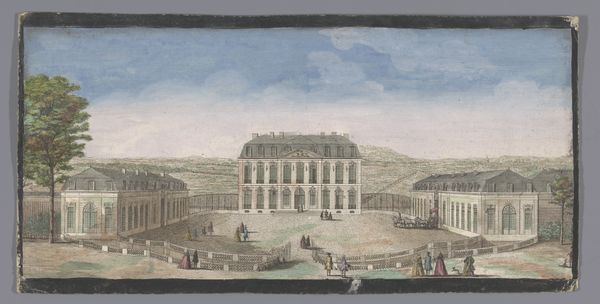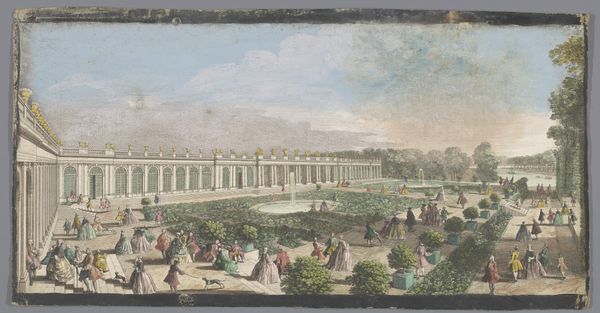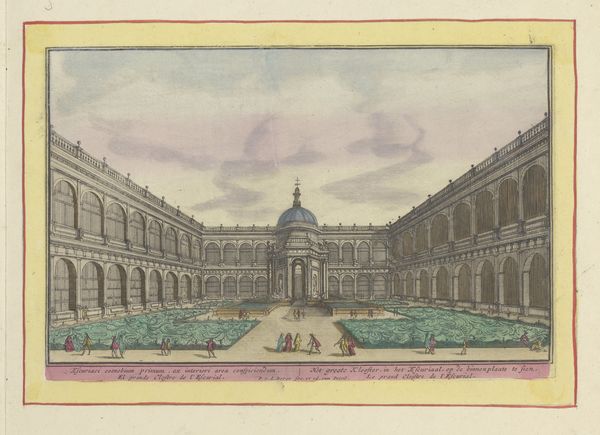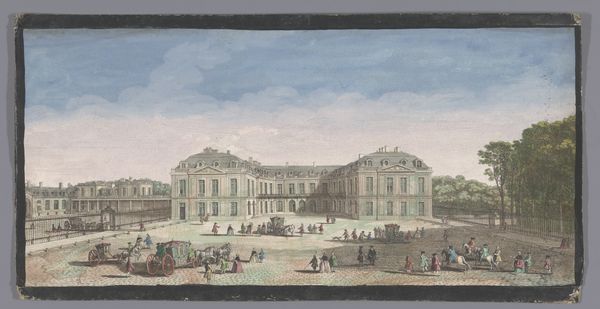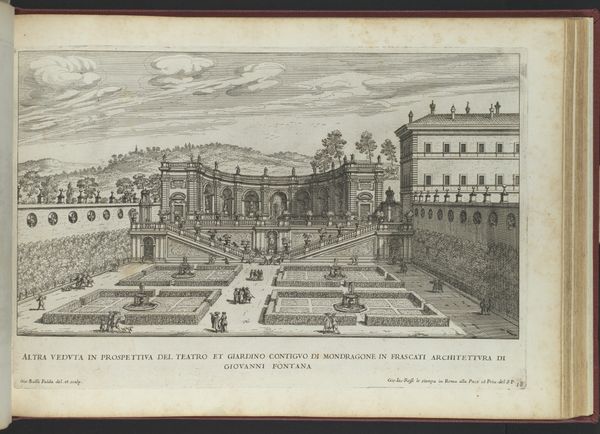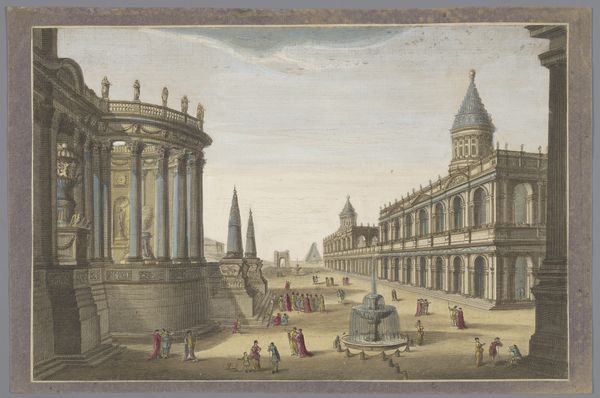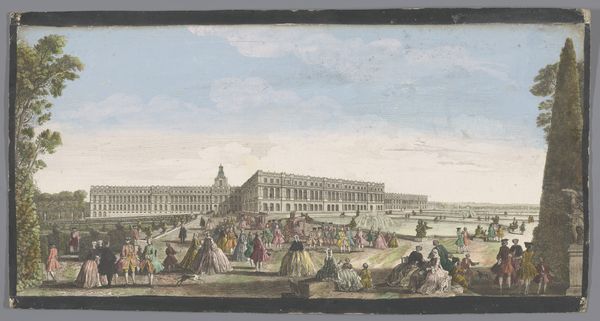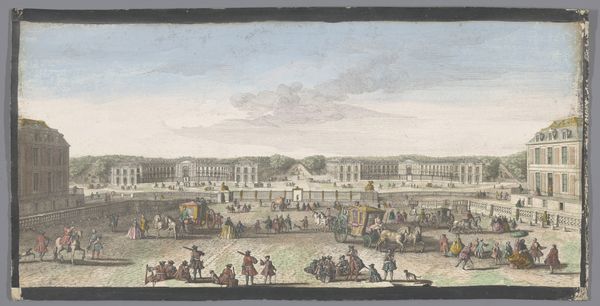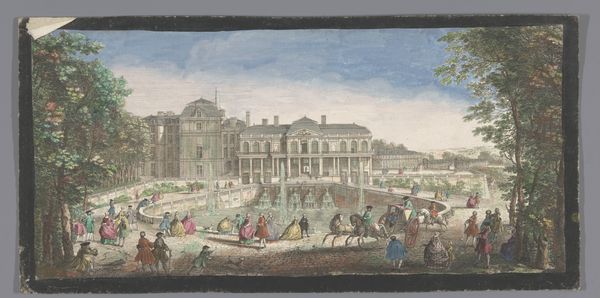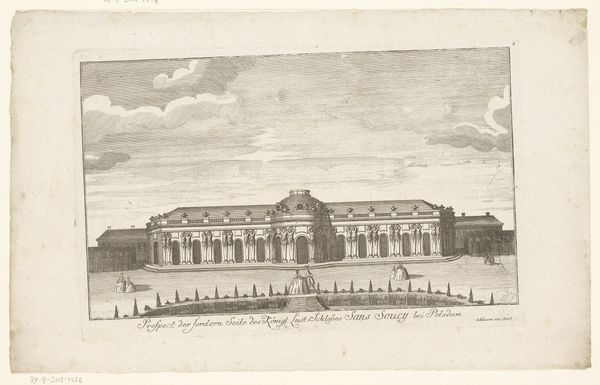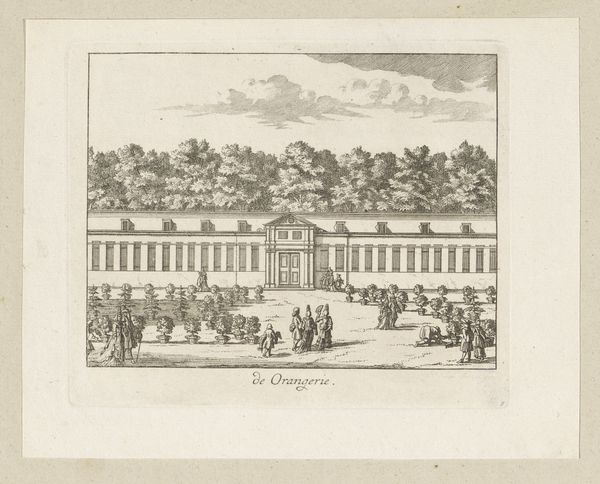
Dimensions: height 245 mm, width 493 mm
Copyright: Rijks Museum: Open Domain
Curator: Let's examine this 18th-century work, "Gezicht op het Palais du Louvre te Parijs," attributed to an anonymous artist, found here at the Rijksmuseum. It depicts a lively scene in front of the Louvre. Editor: It's intriguing. I am immediately struck by the texture, or apparent lack thereof. The muted color palette, particularly, seems to soften the imposing structure, creating an almost dreamlike atmosphere. Curator: Yes, notice how the cityscape is brought to life with watercolor and colored pencil on paper, creating an idealized version of urban life that reinforces the social hierarchy of the time. Editor: Right, and the choice of media itself speaks to a particular context of production. Watercolor, pencil – accessible materials, allowing for reproduction and circulation among a specific social strata invested in these images of power and leisure. Curator: Precisely. The grandeur of the Louvre as a symbol of power, depicted for a viewing public keen on connecting themselves to that narrative through art. Think about who was commissioning and consuming these kinds of images at the time. Editor: I agree, but also consider the physical process. Look at the meticulous rendering of the architectural details versus the more loosely defined figures populating the foreground. There's a tension there – a precision balanced by a sense of ephemeral, passing moments. Curator: Good point, highlighting the transient nature of everyday life against the backdrop of enduring institutions. Editor: For me it asks us to consider art not just as image but an object born out of very specific social practices and labor. Curator: Indeed. Reflecting on this cityscape of the Louvre, we’re given insights into how images not only capture but actively participate in the construction of social narratives and power dynamics. Editor: Ultimately, I think that interrogating the means of production and dissemination allows for a deeper appreciation of how these seemingly quaint city views worked in their own time, and speak to us in ours.
Comments
No comments
Be the first to comment and join the conversation on the ultimate creative platform.

